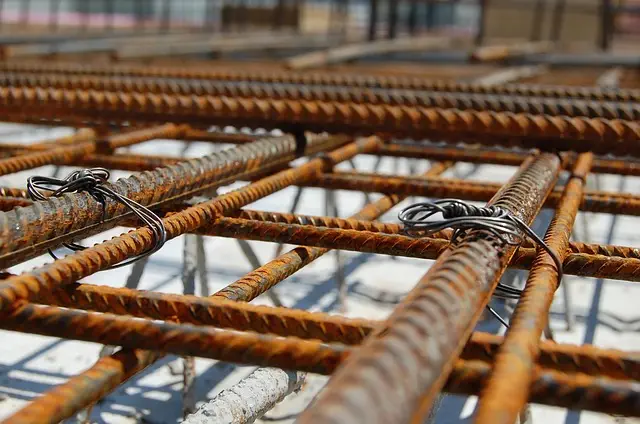Growing Vietnam Kratom (Mitragyna speciosa) indoors requires meticulous environmental control and attentive care to replicate its natural habitat and produce high-quality leaves. Key practices include setting up LED grow lights on a 12-hour cycle to mimic sunlight, maintaining temperatures between 75 to 85 degrees Fahrenheit and humidity levels around 60%, and using soil with an acidic pH for optimal nutrient absorption. Indoor cultivators must monitor moisture levels to prevent overwatering or underwatering and prune plants to enhance bushiness and yield. An Integrated Pest Management (IPM) approach is essential for managing pests and diseases without compromising plant health. Indoor growing conditions should be consistent with minimal fluctuations to avoid environmental stress that could affect potency. With the right conditions and careful management, cultivators can achieve a successful indoor harvest of this unique kratom strain, comparable in quality to its outdoor-grown counterparts.
Exploring the intricate world of herbal cultivation, this article delves into the nuanced process of growing Vietnam Kratom leaves indoors. Known for its unique alkaloid profile, Vietnam Kratom is a sought-after variety among enthusiasts seeking to cultivate their own supply. In the following sections, we will uncover the essential factors for successful indoor Mitragyna haptern (Kratom) cultivation and guide you through the critical stages of harvesting and processing these leaves. From understanding the specific needs of Vietnam Kratom strains to mastering the art of drying and curing, this comprehensive guide is tailored for those passionate about growing kratom indoors. Join us as we navigate the key elements necessary to achieve a thriving indoor Kratom garden and ensure a high-quality product from leaf to powder.
- Mastering the Art of Indoor Mitragyna Haptern Cultivation: A Comprehensive Guide to Growing Vietnam Kratom Leaves
- Essential Factors for Successful Vietnam Kratom Cultivation Within Controlled Environments
- – Understanding the Specific Needs of Vietnam Kratom Strains
Mastering the Art of Indoor Mitragyna Haptern Cultivation: A Comprehensive Guide to Growing Vietnam Kratom Leaves
Cultivating Mitragyna haptern, commonly known as Vietnam Kratom, indoors presents a unique set of challenges and rewards. Unlike its outdoor counterpart, indoor cultivation requires meticulous attention to environmental factors that mimic the natural conditions ideal for Kratom’s growth. Lighting is a critical element; employing LED grow lights that simulate the full spectrum of sunlight can compensate for the lack of natural light indoors. These lights should be placed on timers to provide a 12-hour light cycle, mirroring day and night patterns that are conducive to plant health.
Temperature and humidity must also be carefully controlled. Kratom plants thrive in warm, humid environments, with ideal temperatures ranging between 75 to 85 degrees Fahrenheit during the day and slightly cooler at night. A humidity level of around 60% is optimal, which can be maintained using a humidifier or by regularly misting the plants. Indoor growers must also monitor nutrient uptake, as soil quality indoors may differ from that in the wild. A balanced fertilizer regimen tailored to the growth stage of the plant ensures proper nourishment and promotes healthy leaf development.
Ensuring adequate space for root growth is another aspect of indoor Kratom cultivation. Containers with ample drainage holes are essential to prevent waterlogging, which can lead to root rot. The potting medium should be well-draining and rich in organic matter to support the plant’s needs. Regularly examining the soil moisture levels and adjusting your watering schedule accordingly is key to preventing overwatering or underwatering, both of which can stress the plant.
Throughout the growth phase, regular pruning can encourage bushier growth and more abundant harvests. Additionally, managing pests and diseases proactively with integrated pest management (IPM) strategies is vital to protect your Kratom plants. With patience and diligent care, indoor cultivation of Vietnam Kratom can yield high-quality leaves that rival those grown outdoors, providing a rewarding experience for enthusiasts and cultivators alike.
Essential Factors for Successful Vietnam Kratom Cultivation Within Controlled Environments
The cultivation of Vietnam Kratom leaves, a variant of Mitragyna speciosa, within controlled environments such as greenhouses or indoor setups presents unique challenges and requirements. To achieve successful growth indoors, it is paramount to closely mimic the natural conditions of its native habitat in Vietnam. Lighting is one of the most critical factors; Kratom requires a consistent light cycle that simulates the long daylight hours of its natural environment. High-intensity discharge (HID) lights or LED grow lights with the appropriate spectrum can provide the necessary light intensity and duration to support healthy growth.
Temperature and humidity are additional key elements in the indoor cultivation of Kratom. These plants thrive in warm, humid conditions that closely resemble their natural environment. A controlled environment allows for precise adjustments to temperature and humidity levels; ideally, maintaining a temperature between 75-85°F (24-29°C) and a relative humidity of around 60-70% can facilitate optimal growth. Additionally, Kratom is sensitive to water quality; ensuring the water used is free from fluoride and chlorine is essential. Regular but moderate feeding with well-draining, nutrient-rich potting mix will provide the necessary sustenance for healthy development. Monitoring soil moisture and nutrient levels consistently is crucial to prevent overwatering or underwatering, which can stunt growth or lead to plant stress. With careful attention to these environmental factors and attentive care, growing Kratom indoors can yield a bountiful harvest of high-quality leaves.
– Understanding the Specific Needs of Vietnam Kratom Strains
When cultivating Vietnam Kratom leaves, it’s crucial to tailor your approach to the specific needs of this unique strain. Unlike other kratom varieties, Vietnam Kratom thrives in environments that closely mimic its native conditions. These plants prefer consistent humidity and temperature, similar to those found in their Southeast Asian origins. Growing Vietnam Kratom indoors requires careful attention to these factors, as artificial environments can be challenging for the plant if not properly regulated. Ensuring a controlled climate is key; too much fluctuation can stress the plant and affect its potency. Additionally, the soil pH should be closely monitored, maintaining an acidic range to promote optimal nutrient uptake and plant health. Adequate lighting is also essential, with full-spectrum LED grow lights being an effective option for emulating natural sunlight. With the right conditions and a patient hand, indoor cultivators can yield high-quality Vietnam Kratom leaves that carry the unique alkaloids for which this strain is known. Proper pruning, fertilization, and watering regimens further contribute to a robust and healthy plant, ensuring a bountiful harvest of leaves that exhibit the characteristic vein patterns and potency expected from this strain.
Growing Vietnam Kratom leaves indoors presents a unique and rewarding challenge for enthusiasts seeking to cultivate this potent strain. This article has delved into the nuances of indoor Mitragyna haptern cultivation, offering a detailed guide that covers the essential factors necessary for successful growth within controlled environments. By understanding the specific needs of Vietnam Kratom, including its optimal environmental conditions and nutritional requirements, anyone can master the art of growing this versatile plant. For those interested in pursuing kratom cultivation as a hobby or for personal use, this knowledge is invaluable. It empowers cultivators to tailor their growing practices to the unique characteristics of Vietnam Kratom leaves, ensuring a thriving indoor garden and potentially yielding a bountiful harvest of high-quality kratom. With diligent application of the insights provided, even novice growers can achieve impressive results in their indoor kratom cultivation efforts.






